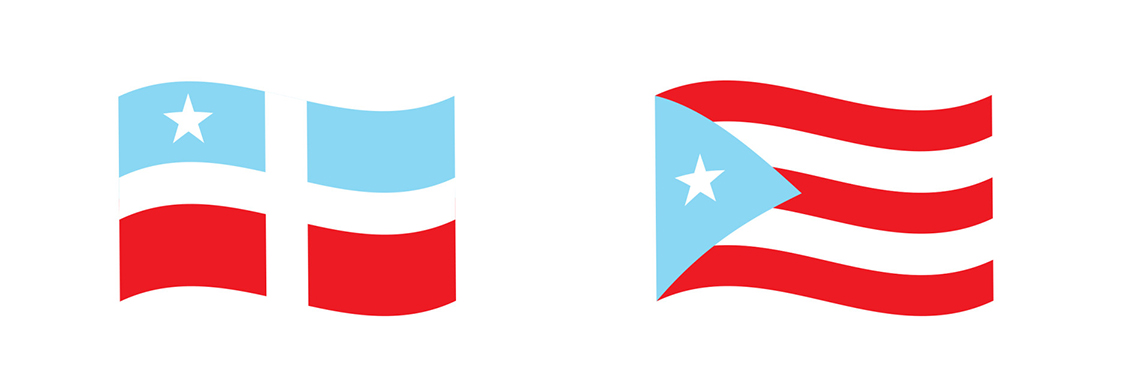
The key to Puerto Rico's future independence may be its flag
From the Grito de Lares to the black and white flag that dethroned Rosselló, this is how the oldest colony in the world defends its political identity.
The history of Puerto Rican migration to the United States - where some 5 million Boricuas currently live, according to the census - began in the late 19th century and intensified in the period following Hurricane Maria. But this island, considered a U.S. commonwealth, proudly flies not one, but many flags symbolizing its "resistance to colonialism."
This is how Puerto Rican historian Jorell Melendez-Bandillo explained it to Mother Jones' collaborator Justin Agrelo. For Meléndez-Bandillo, the flags are proof of how Puerto Rico has always asserted itself and will continue to assert itself as a nation, whether its people are in the diaspora or remain on the island, working for the reconstruction of what is the oldest colony in the world.
Could it be that, like the dollar bill, the flag of Puerto Rico, through its red and white stripes and the apex of a triangle pointing forward, holds the key to its future?
In the time it takes to see it fly, we go through its history...
For more than four centuries, the Spanish empire kept Puerto Rico under its control, in a period marked by the genocide of indigenous Tainos and the arrival of African slaves.
However, the shock wave of independence movements throughout Latin America reached the island, producing an uprising known as El Grito de Lares in 1868. It was Ramón Emeterio Betances, one of the leaders exiled to the Dominican Republic, who ordered a similar flag to be created, the Grito de Lares flag, which is still official in this island city.
Did you know that Puerto Rico's best-known flag originated not on the island but in the New York diaspora? It was on December 22, 1895, when members of the Puerto Rican Revolutionary Committee in Manhattan created this new symbol by inverting the colors of the Cuban flag.
Even though Cuba did achieve independence from Spain around the same time, Puerto Rico became a colony of the United States, and its red and white stripes, sky-blue triangle and white star became the best expression of the Puerto Rican desire for autonomy.
"The flags come to represent a future that has not yet been reached."
Half a century later, in 1948, the U.S. passed the Gag Rule that prohibited the display of this flag, punishing those who did so with up to 10 years in prison. What happened, you can imagine, is that the U.S. government unwittingly made it the emblem of Puerto Rican freedom.
RELATED CONTENT

Realizing that the Gag Rule only gave power to an illegal symbol, when the Commonwealth project was established in 1952, the colonial government adopted the pro-independence flag as "official" and flew it on all government buildings alongside the U.S. flag.
They only made one change: They darkened the sky-blue triangle, which became navy blue to make it look more like the U.S. flag.
It is one of the most iconic emblems of San Juan de Puerto Rico and appears in numerous photos, and was even the symbol of the powerful movement that fought against former Puerto Rican Governor Ricardo Rosselló. We are referring to the black and white flag, the work of a collective of pro-independence artists who in 2016 were protesting the Puerto Rico Economic Supervision, Administration and Stability Act (PROMESA), signed by President Obama.
The mournful flag was intended to represent the resistance of Puerto Ricans to the austerity measures imposed by the United States, and later would become a symbol of hope, shedding some of its colors, especially navy blue, which were the result of imperialism that they did not want at all.

The power of a flag is inescapable; when it is stuck in a territory, it dominates its lands and its people; when it is raised, it can be the proof of a popular outcry.
"In Puerto Rico we are always imagining this potential nation," Melendez-Badillo concluded. "The flags come to represent a future that has not yet been reached."











LEAVE A COMMENT: